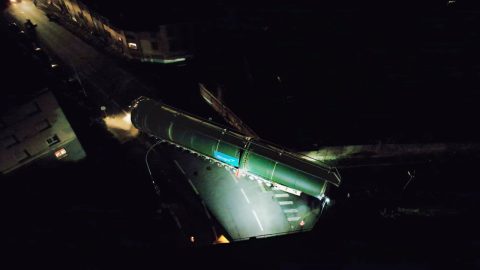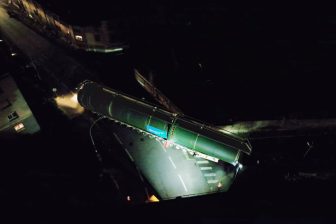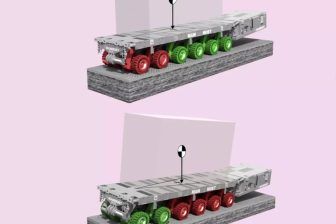
More hurdles for heavy road transport in Germany
Heavy road transport in Germany could face even more bureaucracy as the country’s rail operator Deutsche Bahn (DB) proposed new rules and conditions. These conditions cover heavy transports when they cross or work near railway lines.
According to the European Association of Abnormal Road Transport and Mobile Cranes (ESTA), there are areas of concern in the framework document published by DB’s infrastructure arm DB InfraGO. InfraGo was launched in January to deliver major investment in railway infrastructure and increase DB’s share of the country’s freight market.
“Two particular areas of concern for ESTA are the language requirements of transport operators and the long lead times DB says it will need before approving a transport,” ESTA said. According to the document, a knowledge of written and spoken German is necessary for the communication required to cross a level crossing, and
no persons may be on the vehicle or on the load outside the driver’s cab when travelling over level crossings.
Read also: ESTA’s heavy transport reform proposals jump a new hurdle
For heavy road transport that does not require operating and construction instructions from DB, the minimum processing time from receipt of the application will usually be at least ten working days. But if structural or other measures at a level crossing are necessary, for example, an overhead line shutdown, then at least 10 weeks should be allowed, DB says.
ESTA Director Ton Klijn said, “Of course, we welcome the plans to boost infrastructure investment, but the likely time required to obtain approval for a transport is simply too long and the new language requirements are unnecessary and impractical.”
“If every national organisation took the same approach, the driver of a load from – say – Spain to Poland would need to speak at least four languages. We will be talking both to the German authorities and our contacts in Brussels to see if we can persuade DB to amend these conditions as soon as possible,” Klijn said.
ESTA further noted that DB’s document is said to be aimed at road traffic authorities, transport companies, transport managers, and DB InfraGO’s own staff. It is intended to support the road traffic authorities and transport companies in deciding whether transport is subject to consultation with DB InfraGO AG.
The document states that if certain limits are exceeded, consultation with DB InfraGo is required. These limits are a length of 25 metres, width of 3.5 metres, height of 4.5 metres and axle load of 12 tons. No consultation is needed if these values are not exceeded.
You just read one of our premium articles free of charge
Want full access? Take advantage of our exclusive offer




